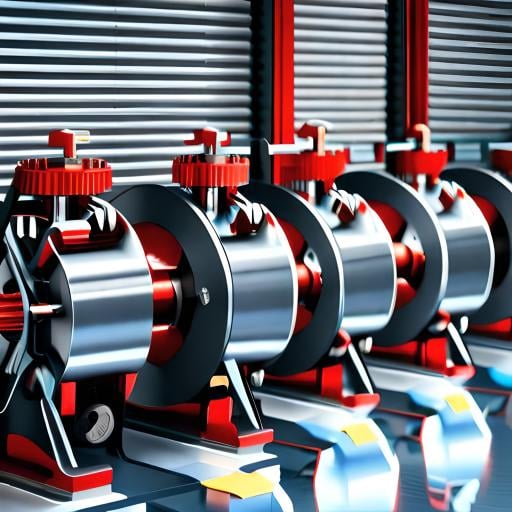In the global economy, industrial electric motors power an extensive variety of applications. According to the International Energy Agency, the car industry is responsible for up to 70% of all energy used in industrial settings, 35% of all energy used in the commercial and service sectors, and 45% of all power produced globally (IEA). The fact that motor-related downtime costs thousands of dollars per hour demonstrates the importance of electric motors in several industrial applications.
Most greenhouse gas emissions and environmental degradation generated by power plants may be attributed to them. Moreover, they are substantially responsible for the rapidly expanding electrical consumption in developing nations. There exists a global economic opportunity to increase industrial motor energy efficiency by 20 to 30 percent, with typical payback periods of less than three years.
Approximately 15%, or 4.3 billion tons, of the world’s yearly carbon-CO2 emissions of 26 billion tons are attributable to electric motors. Increasing energy efficiency is one of the most cost-effective and low-risk solutions to reduce the growing demand for energy and greenhouse gas emissions.
Utilize an efficient motor for the following reasons:
- Reduced operating costs
- Quieter and cooler operation
- Increased motor longevity and reliability
- Decreased greenhouse gas emissions
Beginning with Motor Analysis:
Electric motors lose some of the energy they receive owing to friction, windage, and stator, rotor, and magnetic core losses. These losses account for the reduction in motor efficiency. Considering energy consumption and industrial usage of electric motors, the requirement and relevance of efficiency evaluation and minimum energy performance criteria are clear.
The chosen test technique influences the precision with which motor efficiency and motor loss are calculated. There is no one testing process utilized broadly across all sectors. Despite being a fundamental idea, measuring and certifying the motor’s energy efficiency using the various criteria may be complex.
Techniques Universally Recognized for Assessing Performance:
Frequently discussed in industrial applications are the following testing methods:
IEEE 112-2004 is a common motor and generator testing technique. 2014 version of Tests, International Electrotechnical Commission (IEC) document 60034-2-1. Estimation techniques for the effectiveness and losses of electrical spinning equipment. JEC 37 is the standard for induction devices created by the Japanese Electrotechnical Committee. IEEE Standard 112-2004
This technique contains 10 energy efficiency testing methodologies to exploit the most essential:
- Simple input and output testing
- Evaluate input and output that are loss-separated.
- Conduct a test for machine-to-machine separation loss.
- Load loss determination utilizing smoothed residual losses
- The Eh-star strategy
For the IEC standard test, there are three primary categories:
- Figuring out the input-output power of a single device.
- Measuring the input-output power of two devices that are linked in series.
- The losses of one machine were measured.
The test techniques for the Japanese standard JEC 37 fully neglect the extra load losses. Increasing the energy efficiency of equipment and appliances has several major economic and environmental benefits, including a reduction in running costs for enterprises. In every major city in Netherlands, including Amsterdam, Rotterdam, The Hague, and Utrecht, we provide motor start analysis services.




